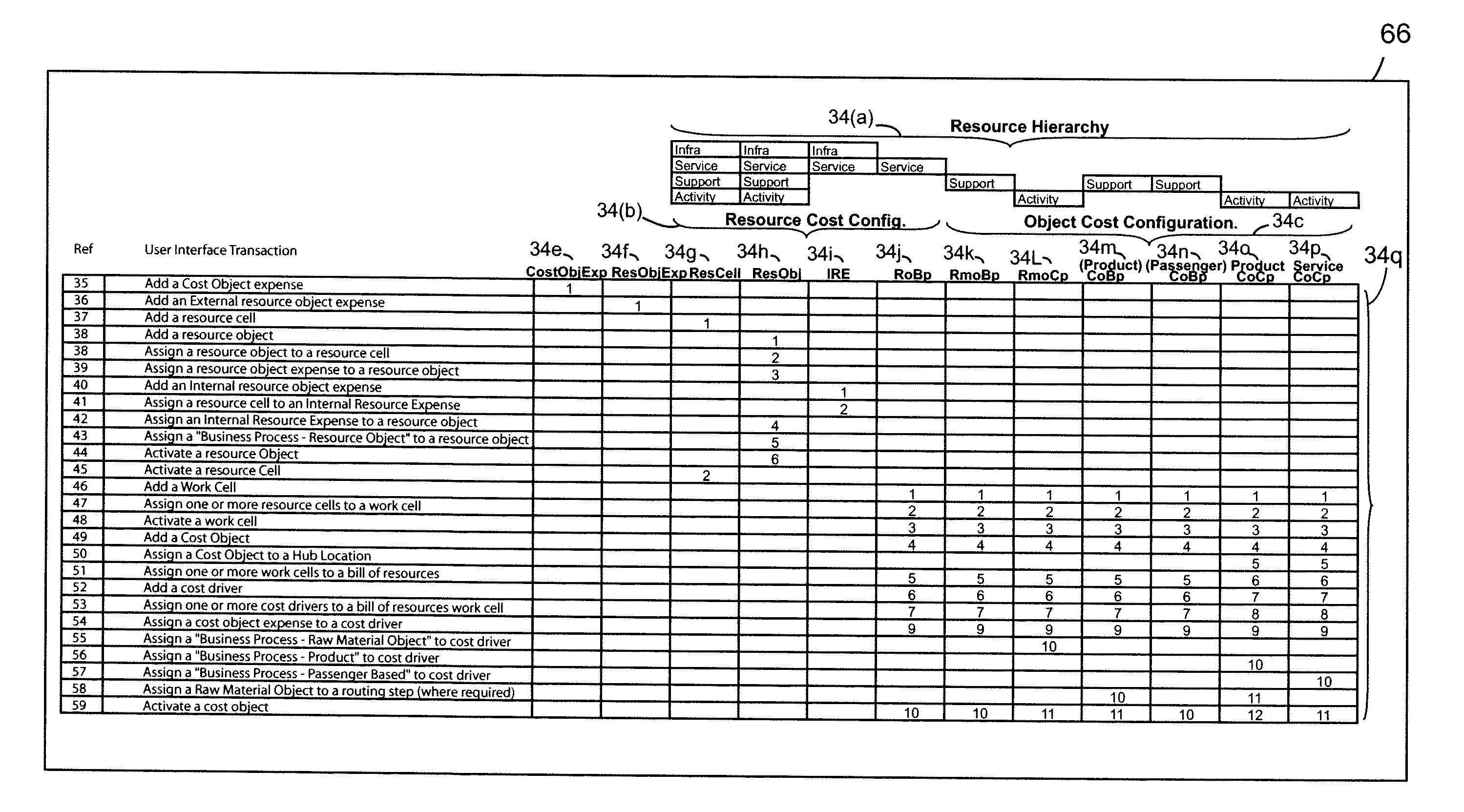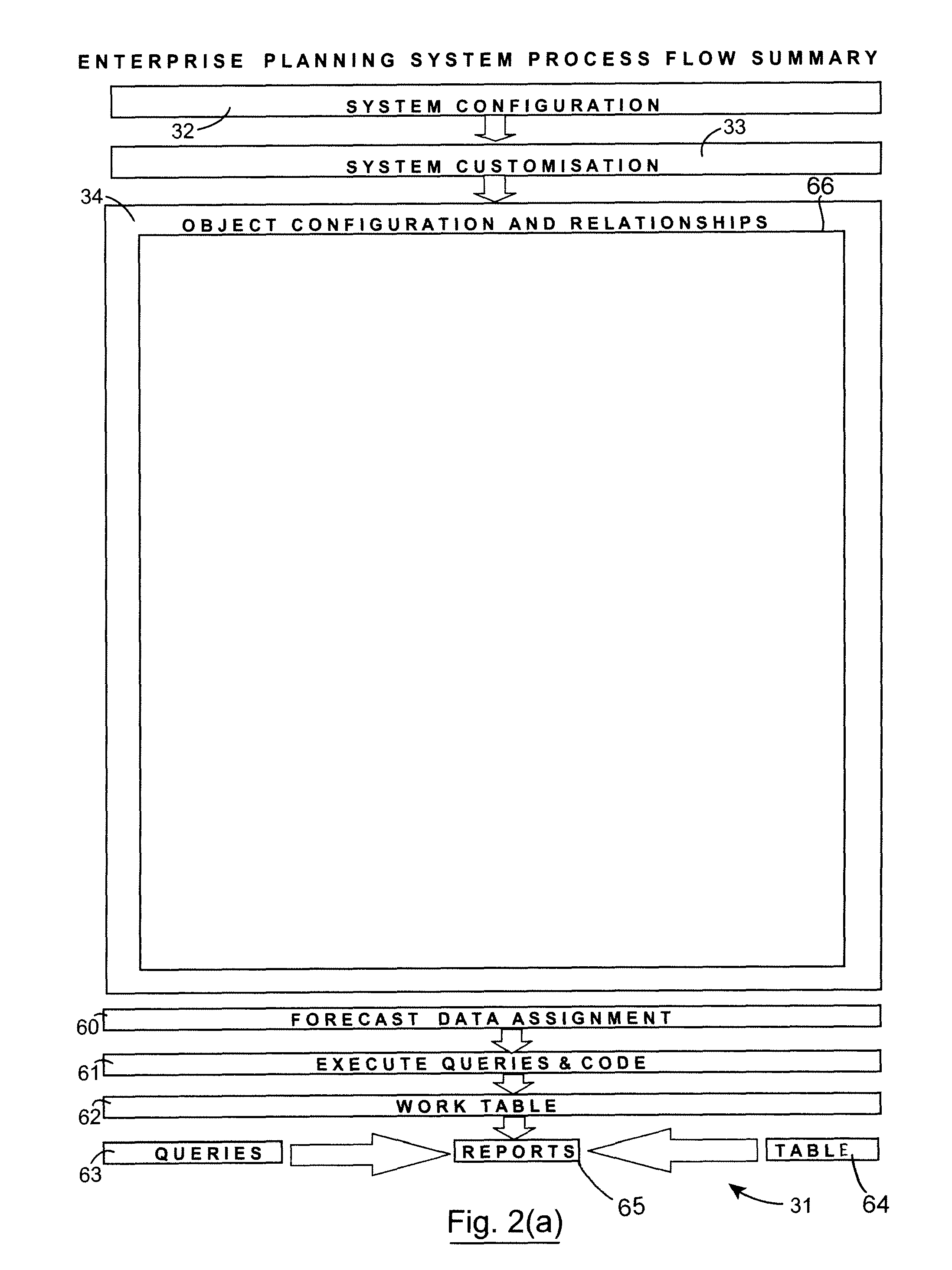Enterprise planning tool
a technology for enterprise planning and costing, applied in the field of enterprise planning tools, can solve the problems of lack of flexibility and scalability required for activity based costing, lack of level of accuracy and precision required for management decision, and lack of activity based costing as applied to enterprise planning tools
- Summary
- Abstract
- Description
- Claims
- Application Information
AI Technical Summary
Benefits of technology
Problems solved by technology
Method used
Image
Examples
example
[0298]
Month 1Total cost assigned to Order Processing100,000Number of orders processed12,500Avg cost per order8
[0299]Cost is assigned to an object by multiplying the cost rate by the quantity of the object represented by the cost rate in order to calculate an object cost.
[0300]On the other hand, utilization is a measure that expresses the percentage of the resource capacity that is consumed by one or more objects. The resource for which the capacity is represented can be a discrete or a multi-functional resource. A discrete resource is a resource that comprises a single resource cell whose output has a single unit of measure. A multi-functional resource is a resource source consisting of one or more resource cells that may be combined in one or more work cells. Work cells are assigned to a bill of resources where these represent the routing steps from which the resources required for each task or activity is located. Activities or tasks are represented by cost drivers. The standard t...
PUM
 Login to View More
Login to View More Abstract
Description
Claims
Application Information
 Login to View More
Login to View More - R&D
- Intellectual Property
- Life Sciences
- Materials
- Tech Scout
- Unparalleled Data Quality
- Higher Quality Content
- 60% Fewer Hallucinations
Browse by: Latest US Patents, China's latest patents, Technical Efficacy Thesaurus, Application Domain, Technology Topic, Popular Technical Reports.
© 2025 PatSnap. All rights reserved.Legal|Privacy policy|Modern Slavery Act Transparency Statement|Sitemap|About US| Contact US: help@patsnap.com



